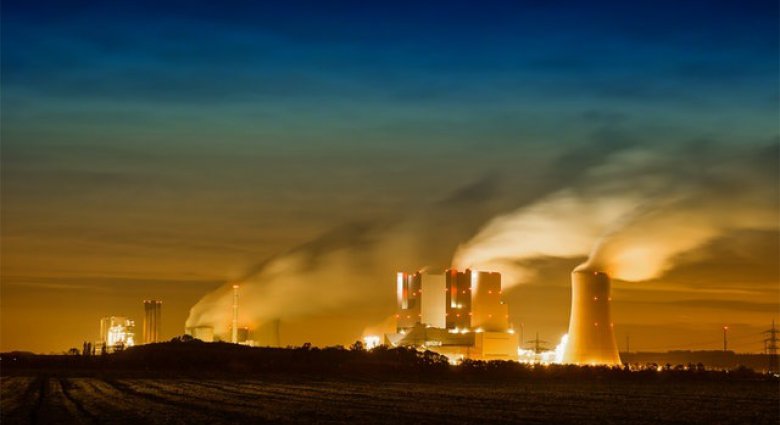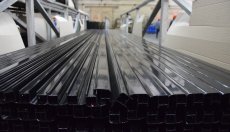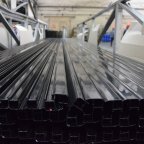
Why is it profitable to bring coal from Poland?
Coal is one of the most unusual minerals found on the globe. First of all, it is a rock of organic origin, i.e. created from the remains of living organisms. Secondly, unlike other rocks, it burns, giving off a lot of heat.
Efficiently used coal
Coal, which was the basic fuel during the industrial revolution, contributed to the development of many industries. The bituminous coal consists of elemental carbon, which gives it a black color, and flammable gases, i.e. hydrogen, nitrogen and oxygen.
A brief history of coal
Most of the coal deposits were formed from 360 to 286 million years ago and this is the reason why this period in the history of the Earth was called carbon. Coal was formed in swampy areas, which at that time were covered with damp tropical forests. The trees from that period, however, very little resembled those we meet today. The biggest ones were giant ferns, horsetails and mottles.
The remains of dead plants fell to the bottom of swampy lakes or lagoons, where, due to the small amount of oxygen and appropriate bacteria, they decomposed very slowly. This phenomenon can also be observed today. In the first phase of the decomposition, rotting plants change into peat. This process is accompanied by the release of methane, the main component of natural gas, mud and fossil gas.
Peat is not able to self-transform into coal. Its decks must first be subjected to the appropriate pressure. The first crushing of peat deposits takes place under the weight of the still growing amount of dead plants. A layer of coal may form from the peat layer with a thickness of 10 to 15 meters. After filling the swamp with a plant substance, layers of sand and silt were deposited on peat deposits. Then the area was lowering, and the sea or lake waters flooded it again, thanks to which it reached the next stage of plant accumulation. This cycle has been repeated many times, which is why we say that hard coal was created in the process of cyclic sedimentation. It led to the formation of numerous coal seams separated by other sedimentary rocks. Their thickness varies considerably and ranges from a few millimeters to several meters.
Coal used in the power industry
Mostly, hard coal is mainly used in power generation and heating. This raw material is also widely used in local boiler rooms and commonly in households. However, few people are still aware of how to choose the best coal for their home. So what is the guideline for choosing coal for fuel?
What is the guideline when buying coal for home?
Low price per ton of fuel does not mean that the purchase is attractive. We do not buy road aggregates, we should not decide on cheap tonnage. We definitely want to buy as much heat as possible for the smallest money. Therefore, the profitability of the purchase shows the relation of the price to the calorific value, i.e. the price per 1 GJ of heat contained in the coal. The most expensive heat is not offered by the coal, which price per ton is the highest, but the one with poor parameters at a high price. It is not worth being attracted by the low price per ton, but always calculate how much 1GJ of heat costs and on this basis compare the profitability of different types of fuel.
The less honest seller, instead of the calorific value or caloricity, give the heat of coal burning, hoping that we will not know it. The heat of combustion is always higher than the calorific value, so it looks more attractive and can be easily cut. Where is the detail? Combustion heat is the total energy released from burning coal, including the energy escaping along with the generated steam. The problem is that this energy is useless to us. In order to recover it, we would have to cool the exhaust gases to cause them to condense. This process creates so many technical problems that up to now there has been no coal condensing boiler. Therefore, when purchasing, only use the heating value of coal and ignore the heat of combustion.
Coal from Poland is the best
Polish coal has been mined since at least the mid-seventeenth century. Our deposits, located in Upper and Lower Silesia, in Lesser Poland and in the Lublin region, belong to one of the largest in Europe. It makes Poland the largest hard coal producer in the European Union.
Coal from Polish mines is valued on the market for proven, stable quality corresponding to the declared technical parameters. High calorific value, long burning time, compact body, are the most important advantages of Polish coal. The exploitation of Polish deposits has its long traditions, and coal remains our basic energy resource. Polish coal is successfully used in power plants, in the production of various goods, as a fuel that drives various machines and equipment, as well as fuel for heating homes.
Very good characteristics of our domestic products and a wide range of the assortment allows to match the coal to the specific needs and requirements of the recipient. The high calorific value translates into the efficiency of coal, which burns well and gives a lot of heat. Here, each type of fuel has its own advantages and finds its best application. Sorted and rinsed coal from Polish mines is a guarantee of the lack of pollution and satisfaction of recipients. The increasingly competitive price also speaks in his favor.
The article was created with the help of the Polish coal producer http://www.kinvestments.eu/.
View

Properties of aluminum and its applications

The Tool for Managing Revenue in the Healthcare Industry






























